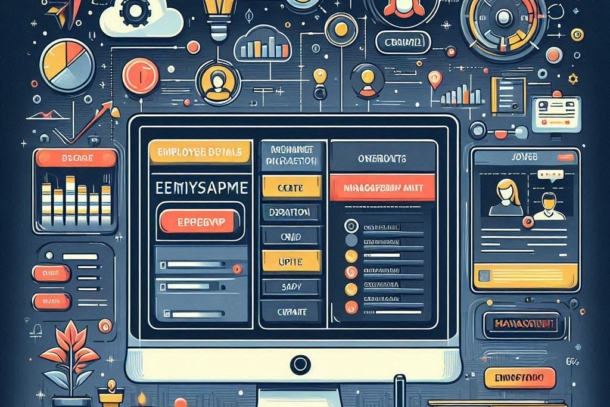This project demonstrates the implementation of a comprehensive Employee Management System with the use of Spring Boot for backend development, JPA & Hibernate for object-relational mapping, and Spring Security for user authentication and authorization. This CRUD (Create, Read, Update, Delete) system is designed to simplify employee management, offering seamless integration between the frontend and backend components.
Through this application, users can effortlessly manage employees, performing key operations like creating, viewing, updating, and deleting employee records. The project uses Thymeleaf for rendering dynamic HTML pages and Bootstrap for creating a responsive user interface.
Key Features
- Seamless Backend Integration: This project is built on top of Spring Boot, making it scalable, efficient, and easy to maintain.
- Database Schema Management: With Liquibase, the project ensures version-controlled, automated updates to the database schema, providing consistency across multiple environments.
- CRUD Operations: The system supports creating, reading, updating, and deleting employees via a well-structured REST API.
- Security: It leverages Spring Security to authenticate users and authorize them to perform specific tasks.
- Dynamic Web Pages: Utilize Thymeleaf templates to generate interactive and user-friendly web pages for managing employees.
- ORM with Hibernate: Simplified data management through JPA & Hibernate, allowing the application to interact with the database via Java objects instead of direct SQL queries.
Core Entities
- Employee: Manage the details of employees, including personal information and job details.
- Department: Organize employees by assigning them to different departments.
- Address: Store employee address details, ensuring accurate contact information is maintained.
Technologies Used
- Spring Boot for backend development.
- Spring Data JPA & Hibernate for ORM (Object-Relational Mapping).
- MySQL as the database.
- Liquibase for database schema versioning and migrations.
- Thymeleaf for dynamic web page generation.
- Bootstrap for responsive and modern UI design.
- Postman for API testing.
- Spring Security for handling user authentication and authorization.
Database Schema Management with Liquibase
The project utilizes Liquibase to handle database versioning and migrations. Liquibase is integrated to ensure that any updates to the database structure are applied automatically across different environments, making it easier to deploy the application. This feature guarantees that the schema remains consistent, preventing manual interventions or errors.
API Testing with Postman
To ensure that the API endpoints are functioning correctly, this project uses Postman to send requests to the backend and validate responses. Postman enables developers to perform GET, POST, PUT, and DELETE operations efficiently and test the behavior of the CRUD operations.
MVC Architecture
This project follows the Model-View-Controller (MVC) architecture, ensuring a clean separation of concerns and maintaining a modular structure. The model represents the data layer (e.g., Employee entities), the view handles the UI layer (Thymeleaf templates), and the controller processes requests and returns appropriate views or API responses.
Security Implementation
- Spring Security: The project includes Spring Security to secure application endpoints, ensuring that only authorized users can access specific functionalities.
- Role-based Access Control (RBAC): Different roles such as ADMIN, MANAGER, and EMPLOYEE are defined, with each having varying levels of access to the application’s resources.
- In-Memory Authentication: For this demo, in-memory authentication is used, but it can be extended to integrate with a database or external user

